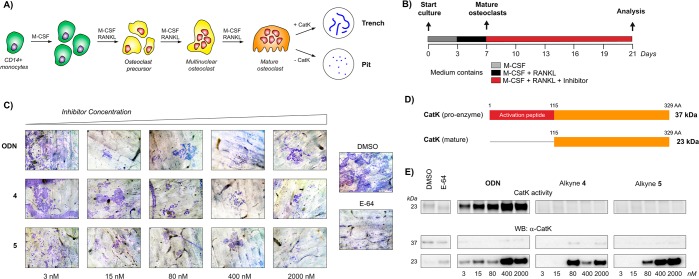Figure 4.
Inhibition of CatK activity in human osteoclasts (OCs). (A) Maturation of OCs from monocytes. (B) CD14+ monocytes on bone slices were treated with M-CSF (day 0) and RANKL (day 3) to stimulate differentiation to mature OCs. Medium containing either inhibitor or DMSO was refreshed on day 7, 10, 13, and 16. At day 21, OCs were washed away and lysed, and bone slices were stained to visualize bone resorption. (C) Bone resorption visualized by staining of resorption pits with Coomassie Brilliant Blue. More staining means more resorption pits and, thus, more bone resorption activity. Normal OCs predominantly form deep trenches (paths), while OCs lacking CatK form small pits (circular dots). (D) Schematic overview of CatK activation. (E) CatK activity and expression in OC lysates. Top: fluorescence scan of CatK bound to irreversible activity-based probe BMV109 shows mature, active CatK. Middle/bottom: Western blotting against CatK shows total amount of CatK present in OC lysates. Darker bands indicate more CatK activity/expression.

